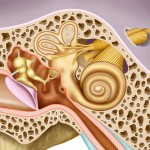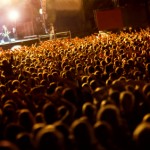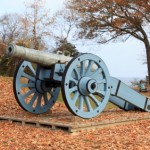I was in the gym recently and, after riding a recumbent bike for a little over an hour, went to the mats to do some stretches. There's usually a class in the room on the other side of a wall and I could see young women exercising in a karate-like manner. But what immediately caught my attention was their background "music," vaguely familiar and incredibly loud. That wasn't the first time I'd heard an ear-threatening sound level coming from that room, but it clearly was the worst. It reminded me off a rock concert I went to many years ago.
I wondered how many of the class members had been exposed to that intensity of sound repeatedly and if it had caused them problems. Then I thought about the instructor who must hear the noise many times a week. I couldn't tell if she was wearing any ear protection, but doubted it.
Later in the day I mentioned the episode to my wife Lynnette who wears hearing aids and is at the gym for Pilates at least three times a week. Sometimes her class has music, playing at a much lower decibel level, but when it does she has mentioned difficulty in hearing the leader's voice calling out what move comes next. She said the women's locker room, again a wall away from the class exercise area, almost shakes when that other group is in session.
When I thought about the noise levels I sometimes hear (noise is defined as "unwanted sound"); one of the loudest forms is often coming from a car next to me at a stop light with a youngster listening to music while leaving the windows of their vehicle open. I guess that's so we can all listen to their choice of music.
I went back to the basics, trying to understand just how loud that studio must be compared to other environments where noise levels can be dangerous to our hearing and our brains.
Noise is measured in decibels (dB), named after Alexander Graham Bell who invented the "electrical speech machine' we now know as the telephone. The subject took me back to the physics of sound and its perception.When you hear a sound, anything from a whisper to a gunshot, your ears and brain are involved in a complex process that begins with an object, let's say a gong, vibrating in something. That something could be solid, liquid or gaseous, but to simplify even a bit, we'll assume it's ordinary air (I've never heard of anyone hitting a gong underwater, so that's a reasonable assumption.)
The frequency of the vibrations (in this case how rapidly the metal moves back and forth) is the determining factor in the pitch of the sound, but the energy of the vibration determines its loudness. So if you strike a gong hard, it emits a louder sound than if you barely touch it. The vibrations move tiny particles toward your ear which acts as a funnel to bring the sound energy to your eardrum, through a series of tiny bony connections to your inner ear.
The minuscule bones, technically the malleus, incus and stapes, but usually called the hammer, anvil and stirrup, amplify the pressure the sound exerts on your ear drum, enabling the next step in the hearing process, motion of fluid in a structure called the cochlea. This is a snail-like spiral with three tubes separated by membranes and tiny hair cells that transmit the sound as electrical impulses to your brain.Which hair cells are moved lets your brain know the pitch of the sound; how many hair cells are moved allows the brain to know how loud the sound was.
Here's a link to a loudness comparison chart. The softest sounds we can hear (e.g., rubbing one finger over another next to an ear) are said to be zero dB, but if you whisper to someone a few feet away, the sound is somewhere between 15 and 30 dB. The scale in logarithmic, so 10 dB is 10 times as loud a zero, 20 dB is 100 times as loud and 30 dB is 1,000 times as loud. Talking at a normal volume to a friend who is three feet away generates a 60 dB sound, a million times as loud as zero dB. Yes, that amazes me too.
So the next time you (or your kids or grandkids) want to buy front row tickets to a rock concert, remember the sound level will be 115-120 dB. I had recently seen an article on the subject of noise-induced harm in The New York Times. Its title was "Fighting Hearing Loss from the Crowd's Roar." Fans at several professional football games had broken a Guinness World record for the loudest crowd noise level. The first game's crowd screamed at a measured 136.6 dB; a short time later, another team's fans registered a 137.5 dB roar.
I found a 2001 ENT grand rounds presentation on "Noise-Induced Hearing Loss" from UTMB, the University of Texas Medical Branch. Nearly one-third of Americans with hearing loss, roughly 10 million total, had impaired hearing due to noise. It is the most common preventable cause of permanent hearing loss. Other, more recent comments, mention associated tinnitus (ringing in the ear) and hyperacusis, sensitivity or intolerance to sound, as associated effects from excessive noise.
If your ears are exposed to even less intense sounds over a period of time, the hair cells and their blood vessels, supporting structures and even nerves can be damaged. The loudest recommended exposure with hearing protection is 140 dB and OSHA, The Occupational Safety & Health Administration sets legal limits for sound intensity in workplaces at 90 dB average over an eight-hour day. If the sound is even louder, the permissible time exposure is shorter; it's cut in half for every 5 dB increase in noise level. So if you work in an environment where the sound intensity averages 100 dB, OSHA would say you should have a two-hour shift.
Another federal group, the National Institute for Occupational Safety and Health (NIOSH) sets its eight-hour cutoff at 85 dB and halves that time for every 3 dB increase. So at 100 dB, NIOSH recommends your shift should only last 15 minutes!
A sudden, exceeding loud noise can also cause a long-term hearing deficit; this form of noise-induced hearing loss is often called acoustic trauma. An explosion or a cannon going off near to you might be examples, but other noises in the 130-140 dB range can be responsible for this form of damage to your hair cells.
For the past thirty-two years OSHA has mandated a Hearing Conservation Program to protect every worker in general industry who is exposed to 85 dB or more over an eight-hour shift. It includes baseline and yearly free hearing exams, free hearing protectors, training in their use and evaluation of their adequacy.
But a discotheque may have a 110 dB sound level and even using the OSHA limits, much less the NIOSH levels, you shouldn't be exposed to that level of noise for more than a half hour.
So it's wise to stay away from very intense noise levels, especially outside of your work environment, in places where those OSHA rules don't protect you.
I'm afraid that many of our younger generations will lose their hearing as they are exposed to noise levels we once would have thought to be rare.




